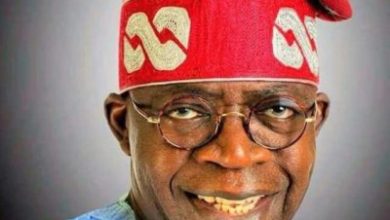FCMB 2021 SCORECARDS : ANOTHER LAME DUCK PERFORMANCE

AS Other Comprehensive Income Becomes a Spoiler Bringing total comprehensive income down by 41%
When it is said that one is a good or an astute banker ,what , in fact , is meant is that one is a shrewd lender ; one who lends money safely and profitably . Such a banker is expected to be a superb risk manager ; his or her major task is to manage the risk of mismatches between assets and liabilities as well as between borrowing and lending rates. Not only that , such a banker must have a smart knowledge of fund transfer pricing . If a bank management gets these right , the task is as good as over and it can boast that it has the core capabilities that deliver competitive advantages and bestow industry leadership ;it navigates easily and makes big exploits .This is where the men are separated from the boys .
The above views may not be farfetched .Lending is the soul of banking as bank management is coterminous with risk management ; and this is where over 70 % of the revenue comes from . After this , financial trading activities and cost control are the other naughty areas where the men are separated from the boys ; fee and commission segment doesn’t give much hassle . In a nutshell, to effectively compete, every player needs to adjust its internal strengths to the environmental opportunities primarily in the above critical areas ; strong banks are known to deliver their products, services, and other results, that have high value to customers and other stakeholders through strategic process when armed with special knowledge ,skills and technological know-how in those critical success areas
However , the above task remains a hard nut for many banks ; while some banks could smartly identify relevant critical success factors highlighted above among others, their internal strengths are too weak to exploit environmental opportunities and gain competitive advantages necessary to attain leadership positions in the industry .
FCMB is not excluded and that is why a bank established in the early 80s remains on the treadmill even as tier 2 bank . While the bank is perfectly sound , liquid and highly capitalized with no threat to it as a going concern , some analysts and observers in the business of financial analysis, no doubt ,believe a major lacuna and a big drawback on FCMB’s much needed momentum for its leadership; its inability to display cutting edge skills in the core business of risk taking or maturity transformation as well as in the trading segment are specifically the threat to its competitiveness at the bottom line and its inability to change its status to a first tier bank . All because of inadequate internal strengths to exploit the environmental opportunities, the bank has remained on the treadmill . .This view is confirmed by facts and figures : its high cost of risk , cost to income ,huge loan loss impairment, and cost of funds are its major drawbacks .All these metrics drive its less inspiring net interest income and ultimately its lethargic net interest margin ,a metric which measures how successful a bank is at making investment decisions or investing its resources
This is not limited to FCMB . Definitely , these tasks are herculean as only few banks could barely raise their heads above water presently in the Nigerian banking industry when the issue of risk taking , the core business of banking is involved ; this is the hard nut ,but FCMB is struggling to break it , making frantic efforts to join these few strong banks with iron teeth ; but now, it is yet to find its feet in this area and overcome this decisive challenge convincingly .Incidentally ,however , this is where the mega bulk is delivered in commercial banking business . But usually ,an accusing finger is pointed at the deleterious macroeconomic environment in Nigeria by some of the victims .However some believe , many managers lack the wherewithal to tackle some difficult challenges of risk taking ,the core business of banking .
FCMB 2021 FINAL RESULTS :: ANOTHER LAMEDUCK SYNDRONE
The above controversy is another issue . A confirmation of this view could be seen from FCMB’s dropping net interest income or its weak net interest margin just as it is battling with its traditional high cost to income ratio . Moreover, its performance in the other comprehensive income segment is like adding salt on injuries.
.A look into its 2021 financial results confirm the above . Other Comprehensive Income (OCI) including exchange translation and fair value reserve played a spoiler role in driving FCMB’s Comprehensive income 41 % down to N17.5 billion in 2021 from N29.5b, in 2020 in a period that it grew net profit at a negligible pace at 6% to N20.9 b to N 19.6b .
LESS INSPIRING GROSS EARNINGS
An indication that results for the full year 2021 filed with the Nigerian Stock Exchange (NSE) recently may not turn out as rosy was the negligible increment of gross earnings, which grew feebly to N208.5b from N199.4b or less than five percent. The result can be quickly situated against the faster growing interest expenses at 18 % compared to less than7% increase in its interest income. Indeed, to register such an uninspiring performance approximately equal the equivalent year when there was negative economic growth is no mean feat. The amount the bank earned from interest bearing assets in the period, which is a critical determinant of profit, increased to N 161.58b billion from N151.02b And the amount paid out on these assets also increased by 18 percent to N71.11 billion from N60.27b This had a destabilising effect on net interest income, which gave Net interest income a negative outlook to N90.46b from N90.76b, though dropped by an insignificant figure of less than one percent.
IMPAIRMENT
This position was worsened, however when impairments of N9.06b are considered , though it fell massively against N22.31b recorded in 2020 .. This has negative impact on its net income which therefore grew marginally .
NON INTEREST INCOME TO THE RESCUE
After a negative outlook of its net interest income , the expectation is that the management would rev up the non interest items of the balance sheet to stabilize its earnings ; the bank did that exactly ; Consequently ,its Fee and commission income inched up to N35.42b from N30.16b ,an increase of 17%
Not only that ,its fee and commission expense dramatically down by 29.4%to N7 .49b to N10.61b .Consequently , its net fee and commission income increased impressively by 43% to N27.93b from N19.56b
TRADING INCOME
However, other two spoilers responsible for its lethargic net income raised their ugly heads and these could be traced its net trading income which slipped down marginally by 3% to N 6.89b from N 7.12b as well as its other revenue which crashed by 44% to N9.9b from N17.67b,an unfortunate counter balancing factor against the wonderful performance in the fee and commission segment
HIGH COST TO INCOME: Another traditional spoiler for FCMB
Traditionally, FCMB has a poor record of cost control ,the main reason why its cost to income ratio is among the worst . It is not getting better ; its operating expenses skyrocketed by 15 percent to N96.94b from N84.35b in spite of the fact that its gross earnings were lethargic .This has a negative impact on its operating income In the . third quarter 2021, its cost to income ratio stood a t 75.% . Cost-to-income ratio is the measure of the costs of running a company in relation to its operating income. Its cost to income between 2015 and 2019 ranged from 79.00% ,56.30% , 67.80% ,70.70% to 69.40% respectively while its cost of funds were 6.10% ,6.80% 6.80% and 6.80 between 2016 and 2019 .Both metrics are on the high side and among the worst in the industry .
NET PROFIT AS A VICTIM
Its less inspiring net interest income ,high to income ratio and huge level of impairment loss dragged and depressed its pre and post tax profit and margins ..Its pre-tax profit grew at a moderate rate of 9% percent to N23.93b from N21.91b while its Net profit also grew but at a much slower pace than pre-tax profits; it rose 6.5 percent to N 20.89b 3,848 from N19,61b achieved in the equivalent 2020
The depressing impact of the above came out more glaringly on its margins .The bank pre tax margins increased marginally to 11.5% from 11% ;net profit margins to 10 % from 9.8 % ; its Return on Equity were 8.7 and 8.6 while Return on Assets were 0.84 and 0.95 respectively in 2021 and 2020 .However, currently Return on total capital and Return on invested Capital were 4.10% and 3.78 % respectively at the end of 2021 just as its operating margin was 13.79 %
STOCK PRICE OR MARKET VALUE AS ANOTHER VICTIM
The bank’s stock price has appreciated 1.67 percent since the beginning of this year. FCMB closed its last trading day (Friday, January 28, 2022) at 3.04 NGN per share on the Nigerian Stock Exchange (NGX). It began the year with a share price of 2.99 NGN and has since gained 1.67% on that price valuation, ranking it 53rd on the NGX in terms of year-to-date performance .Although this underscore investors belief in the growth potential of the bank. However , -10.1% return FCMB underperformed 1.5% and the market which returned 1.1 % over the past year
PE RATIO OUTLOOK
Another measure to consider is the Price to Earnings Ratio (P.E.) which is the Price of the stock divided by the earnings of the stock. P.E. is useful in determining how “cheap” or expensive a stock is. Though the current price is below the target N3.06 , a PE ratio of 2.9 times multiple indicate that investors are willing to part with more to own the bank’s stocks. It is difficult not to be so since its stock is relatively cheaper compared to the industry average at 3.5x and the market at 7.9x .This is equally reflected in its 0.3x price to book ratio compared to the average industry figure of 0.5 %
However ,when a stock price is cheaper an investor who buys it expected to make capital gain when it corrects itself or appreciate . Can this stock deliver to this expectation? Not every cheap or low price stock is undervalued . This is suspected to be the case with FCMB . The stock low price could be traced to its less inspiring fundamentals which manifest in its low Return on Equity at 8.7% and Return on Assets at 0.91 as well as its low value EPS and poor dividend yield and dividend pay out ratio .
EPS
A good way to determine earnings to the investor is the Earning Per Share (EPS), which is the monetary share value, i.e., what every share issued by the bank will receive from declared earnings. The higher the EPS, the more profitable the bank is. ;Its earnings per share was 104k compared to 98k in 2020.This is miserable when compared with returns on investments like fixed rate assets .
DIVIDEND YIELD
Divided Yield is important because it brings in the market price of the bank stock and the cash dividends paid by the bank, this is most useful because it indicates the actual cash that flows back to the investor.; while dividend yield and dividend payout are also not inspiring at 4.9% and 14% The dividend yield also allows investors to compare FCMB shares with other non-equity products like Treasury Bills and Commercial paper. If the yield on Fixed Income products is higher, then it is better you invest in Fixed Income because you get a higher yield at a lower price. This is equally unimpressive as a 4.9% of its current stock price as a return is lower than alternative returns on fixed assets .
FCMB’s WEAK PROFIT ENGINE
CORE INCOME SEGMENT
The profit engine of FCMB ,no doubt, needs a quick and thorough overhauling . This could be seen from its interest income segment . To have a competitive advantage in this industry , a good and brilliant performance in the core business of risk or loan business is sine qua non . For this to happen ,however , ,first , knowledge of fund transfer pricing , a method used by bankers to evaluate the profitability of deposits and loans, is germane for a sound performance in the core banking income segment . . The challenge, in the case of the deposit aspect is that when bankers evaluate the profitability of deposits, they know the cost or the interest to be paid on those deposits and the associated operating expenses, however determining the return is more problematic because deposits are used to finance various types of assets. . In fact, this is absolutely essential for accurate pricing of the bank’s commercial products and services . For loans, the problem is symmetrical. Bankers know the return on loans or the interest income but do not know its funding cost. The reason in this case is that banks use several sources of funds to finance its assets . . To gain a competitive advantage ,, bankers need a specific fund transfer price to evaluate the cost of funding loans and the cost or the interest to be paid on those deposits . In nutshell , a sound method of calculating the fund transfer price is very critical
.
FCMB ’s core competence in risk taking and management , the core business of banking that is inherent in maturity transformation or the risks of mismatches between assets and liabilities and between borrowing and lending rates , is expected to deliver the mega bulk for this bank , but this bank has not mastered rope impressively to consciously generate enough income ; the impact of this is the lethargic progress of its fortunes over years .
Generating good and strong Net Interest Income, NII , is still a hard nut for this management .This may not be farfetched .This income item is sensitive to both credit and market risks and driven by lending and interest-earning asset volumes as well as the net yield available on these assets after taking into account the cost of funding .This bank needs extra intellectual and managerial expertise in risk and cost management to boost income from this core business of banking
This view is confirmed by its 2021 financial results . In the results recently released , the management of this bank could not display the expected managerial wizardry . Its net interest margin ratios over year confirmed FCMB inept competence in its ability to lend safely and profitably. However , this his could equally be situated on the continuing economic uncertainties and deleterious macroeconomic environment
The Group could not reduce its interest expenses or cost of funds enough to impact impressively on its net interest income and consequently its net interest margin The result of this is the drop in its net interest income . The indicate the bank failed to make good investment decisions this year and used its resources effectively to generate good return.
The year 2021 was a tough one for banks, particularly with its dangerous risk terrain and FCMB could not navigate its ways to escape its scalpel in this segment .This is one of the reasons why EPS is still less inspiring
STRONG NON INTEREST INCOME SKILL : FCMB STABILIZING JOKER
A good manager of a financial institution or bank usually rev up non interest income items of its balance sheet because it holds the key to stabilizing earnings especially in the time the country or interest volatility is a factor . This exactly what FCMB Bank did .
FEE AND COMMISSION : Consequently , its net fee and commission income increased impressively by 43% to N27.93b from N19.56b Fee income is very popular with bank senior management because it is less volatile and not susceptible to market risk like trading income or NII. There is also no credit risk because the fees are often paid up front. There are other benefits as well, such as the opportunity to build up a diversified customer base for this additional range of services. Fee income uses less capital and also carries no market risk, but does carry other risks such as operational risk The Group continues to make significant progress in its retail banking drive evidenced by remarkable growth in transaction volumes and value across our digital platforms and strong growth in customer acquisitions
TRADING:ANOTHER STORMY ISSUE
Finally ,banks generate trading income through trading activity in financial products such as equities (shares) , bonds and derivative instruments. Trading income is the most volatile income source for a bank. It also carries relatively high market risk, as well as not inconsiderable credit risk This bank could not it survive the fangs of this dangerous income source . Albeit marginally, it maintained a negative outlook here .
HIGH COST TO INCOME RATIOS
A key drawback of its profitability is its traditionally high cost to income ratio.. .This does not spring any surprise . Its operating expenses rose 11% Year-on-Year to ₦73.2 billion in the nine months of 2021, largely due to increased regulatory costs which accounted for 44% of total cost growth .However in the third quarter 2021, its cost to income ratio stood a t 75.% . Cost-to-income ratio is the measure of the costs of running a company in relation to its operating income. The higher the ratio, the greater the risk of zero profitability. Between 2015 and 2019 this ratio ranged from 79.00%,56.30% ,67.80% ,70.70% and 69.40% . The negative impacts of this on its bottom line have been very enormous and have been damaging to its leadership dream







